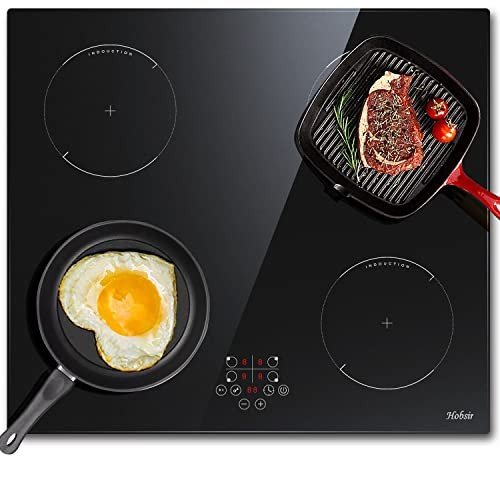14 Questions You're Afraid To Ask About Electric Oven & Hob
Understanding Electric Ovens and Hobs: Your Guide to Cooking Efficiency
Electric ovens and hobs have actually transformed the cooking landscape, offering home cooks and professional chefs a trustworthy, efficient, and consistent method to prepare meals. As Oven And Hobs For Sale continue to influence appliance style, the efficiency and performance of electric cooking systems have actually substantially improved. This short article explores the functions, advantages, and factors to consider surrounding electric ovens and hobs, providing an extensive overview for anybody wanting to update or invest in kitchen appliances.
What Are Electric Ovens and Hobs?
Electric ovens are kitchen appliances created for baking, broiling, roasting, and other cooking methods that require controlled heat. They use electric coils or convected heat elements to generate and preserve the wanted temperature. Electric hobs, typically described as electric cooktops, are flat surfaces with heating elements that enable pots and pans to be placed directly on them for cooking.
Table 1: Key Differences Between Electric Ovens and Hobs
Function
Electric Oven
Electric Hob
Main Function
Baking, roasting, broiling
Heating pots and pans for cooking
Heating Method
Electric coils or glowing elements
Induction, radiant, or ceramic elements
Operation Temperature Range
Up to 500 ° F (260 ° C
) Varies by design; generally lower than ovens
Cooking Styles
Versatile; appropriate for various dishes
Mostly stovetop cooking techniques
Area Requirement
Typically built into cabinets
Typically standalone or integrated alternatives
Energy Consumption
Normally higher, depending upon use
More energy-efficient with induction hobs
Advantages of Electric Ovens and Hobs
When thinking about electric ovens and hobs, it's vital to understand their various benefits, which can enhance the cooking experience.
1. Constant Heating
Electric ovens and hobs offer even and consistent heating, which is vital for many cooking techniques. This ensures that meals cook consistently, decreasing the possibilities of overcooking or undercooking specific locations of food.
2. Security Features
Modern electric ovens and hobs come geared up with numerous safety features to prevent accidents in the kitchen. For example, many models consist of automated shut-off functions, hot surface indications, and child security locks.
3. Easy to Use
Unlike gas designs, electric ovens and hobs are straightforward and easy to use. The simpleness of switching on a dial or pressing a button makes them available for cooks of all ability levels.
4. Versatile Cooking Options
With numerous cooking techniques possible, from baking to simmering, electric designs are flexible sufficient to accommodate a broad variety of culinary styles and preferences.
5. Cleaning and Maintenance
Electric ovens usually feature smooth surface areas that are simple to clean, particularly models with self-cleaning capabilities. Hobs, specifically induction types, likewise provide a flat surface that is simple to wipe down, making maintenance a breeze.
Popular Types of Electric Ovens:
- Conventional Ovens: Ideal for traditional baking and roasting.
- Convection Ovens: Circulate hot air for much faster, even cooking.
- Microwave Ovens: Use electromagnetic radiation for quick heating and cooking.
- Toaster: Small countertop ovens for fast jobs.
Popular Types of Electric Hobs:
- Induction Hobs: Utilize magnetic fields for quick heating and energy efficiency.
- Radiant Hobs: Feature electric coils that warm up to prepare food.
- Ceramic Hobs: Offer a smooth surface and are easy to clean.
Factors To Consider When Choosing Electric Ovens and Hobs
While electric ovens and hobs provide various advantages, a number of aspects should be considered to ensure the best suitable for your kitchen:
1. Area Availability
Assess the readily available kitchen space before buying. Identify whether you need an integrated model or a freestanding appliance, and determine the measurements carefully to make sure an excellent fit.
2. Cooking Needs
Identify your cooking practices and choices. If you frequently bake large quantities or cook complex meals, consider an oven with advanced functions like convection settings or several racks.
3. Energy Efficiency
Search for energy-efficient designs that can conserve on energy costs in time. Energy Star-rated appliances can be particularly cost-effective.
4. Budget
Set a reasonable budget that represents both the initial purchase and continuous operating costs. In addition to the appliance expense, consider setup and prospective repair work.
5. Extra Features
Think about whether features like clever innovation, programmable settings, or steam cooking alternatives are very important for your cooking style.
FAQ Section
Q: How do I clean my electric oven?
A: Most electric ovens come with self-cleaning alternatives. If your model does not have this feature, allow the oven to cool, then wipe down surfaces with a mix of baking soda and water or a commercial oven cleaner.
Q: Is induction cooking safe?
A: Yes, induction cooking is considered safe as the heating component only activates when suitable pots and pans is in contact with it, reducing the threat of burns.
Q: How long does it take for an electric oven to pre-heat?
A: Preheating times differ based upon the oven's design and temperature setting however generally range from 10 to 15 minutes.
Q: Can I use any pots and pans on an induction hob?
A: No, just ferromagnetic cookware works with induction hobs. Inspect for induction compatibility before use to avoid damage.
Q: What is the distinction between a stove and a traditional electric oven?
A: A stove includes a fan that circulates hot air, ensuring even cooking and decreased cooking times compared to a traditional electric oven, which does not have this feature.
Electric ovens and hobs provide a modern option to different cooking needs, providing efficiency and dependability in the kitchen. As customers examine their choices, understanding the functions, types, and factors to consider will allow them to make educated choices. Whether one is a periodic cook or a cooking enthusiast, electric devices can enhance the overall cooking experience, bringing convenience and creativity to the table.
